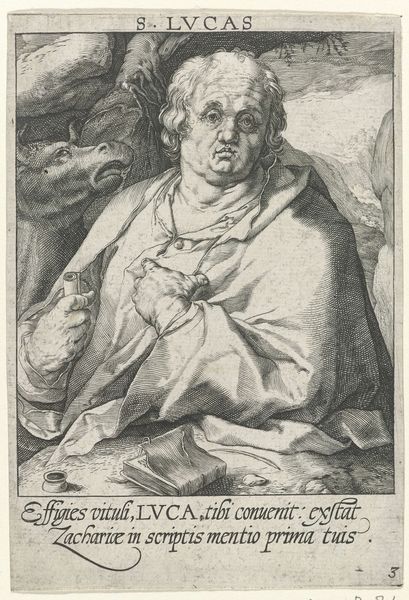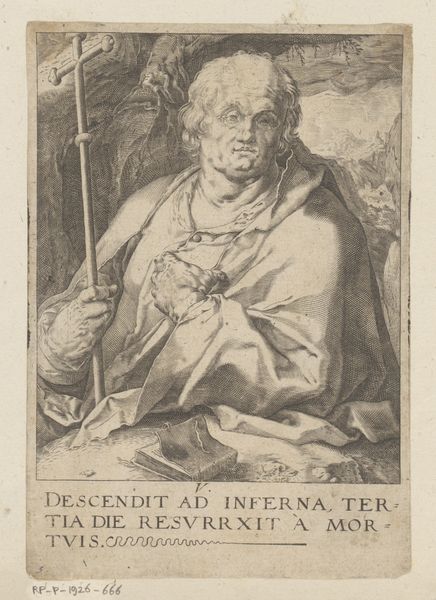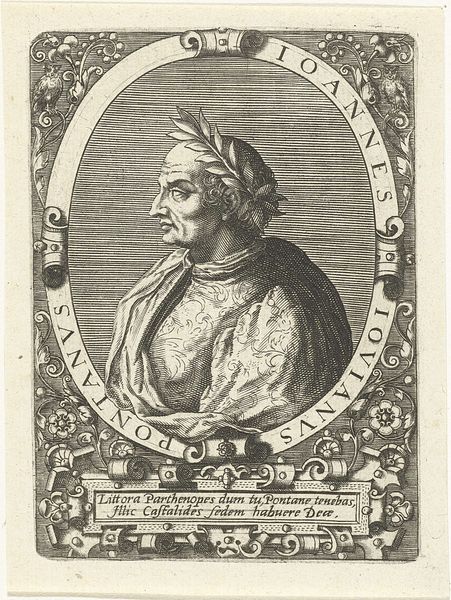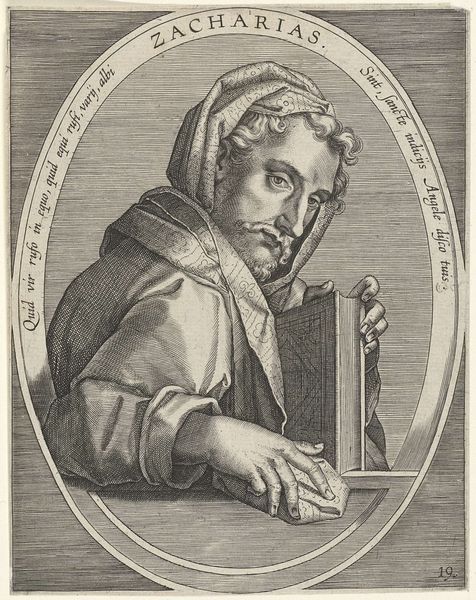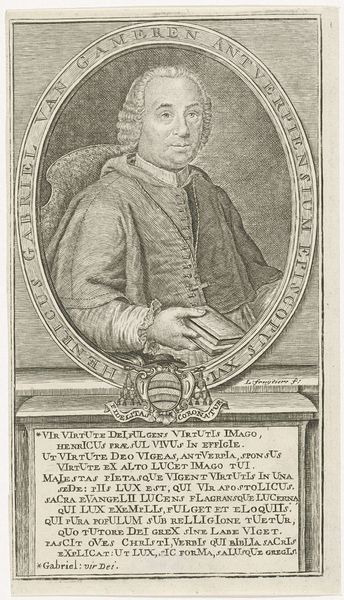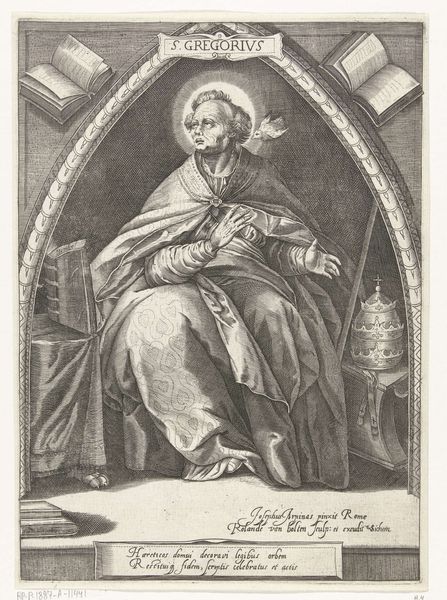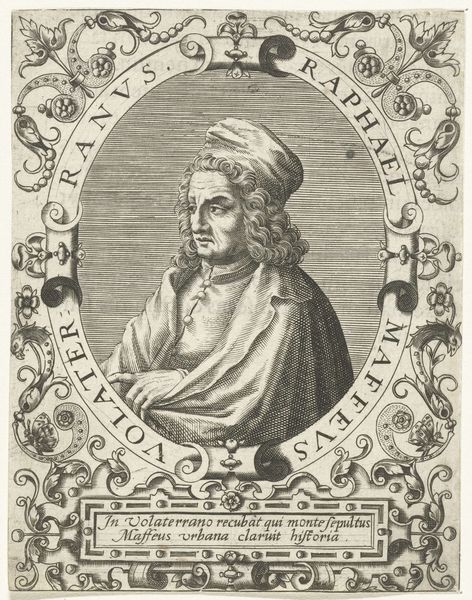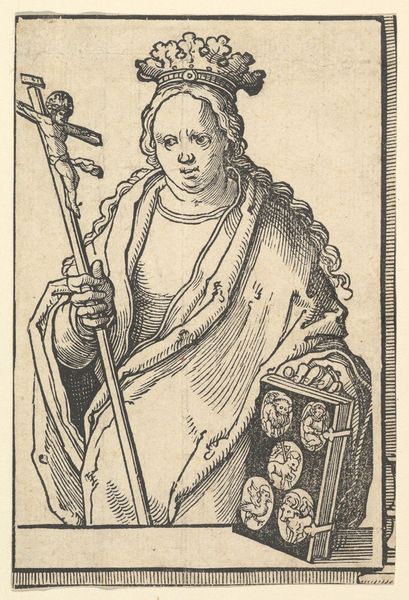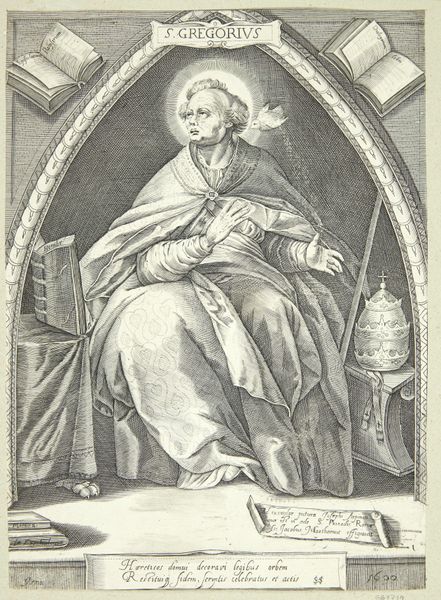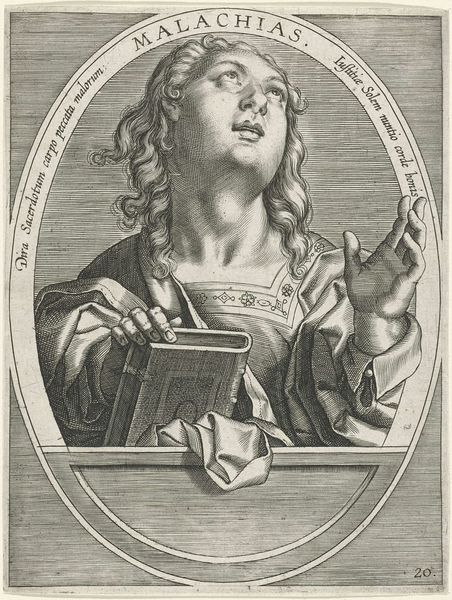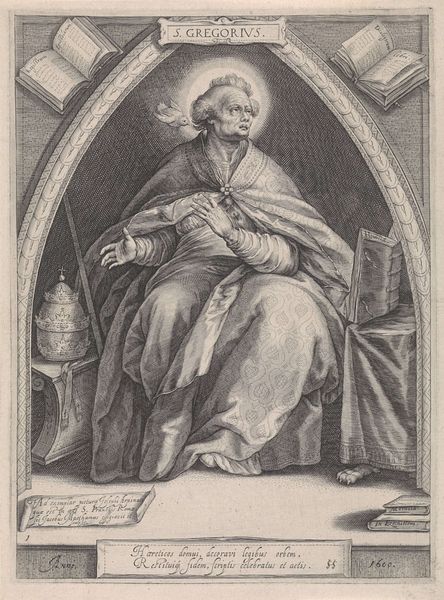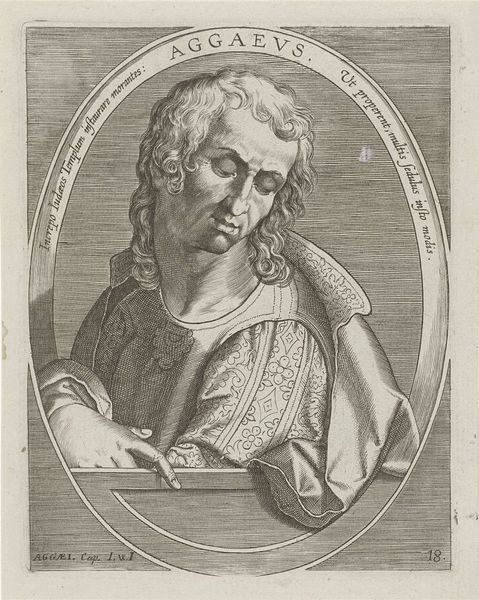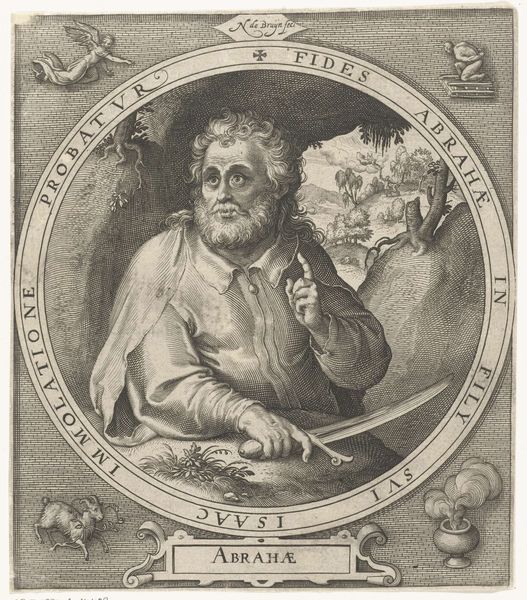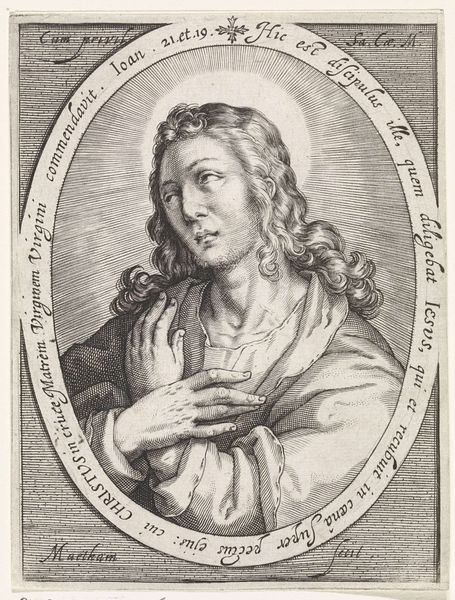
Dimensions: 152 mm (height) x 105 mm (width) (Plademål)
Editor: We're looking at Hendrick Goltzius' "Apostlen Filip" from 1589, an engraving printed on paper. The fine lines of the engraving give a somber feel to the Apostle's portrait. The way light and shadow define the Apostle Philip's features is remarkable. How do you interpret the formal composition of this piece? Curator: Observe how the artist meticulously employed line weight and density. Notice the varied hatching to modulate the Apostle’s garments, compared to the lighter touch on his face. See the contrasting textures and tones, and the semiotic potential unlocked in the relation of form to content. Consider, also, the implied symbolism. The cross, prominently displayed, operates as a formal anchor, and provides compositional balance to the lower register and the book below. How do these forms affect our interpretation of the piece? Editor: So, it’s about the relationships within the engraving itself – the interplay of lines, forms and composition, rather than necessarily external historical elements? Curator: Precisely. The power of this engraving resides in the artist's command of form and its relationship to thematic significance, its skillful translation of three-dimensional volume into a two-dimensional space. External context serves only to confirm visual understanding of form. Editor: I see it now! Focusing on those visual relationships, rather than rushing to a symbolic meaning, has helped me appreciate the artist’s skill so much more. Curator: Indeed, by engaging with the materiality and the forms, new pathways for meaning are uncovered and unveiled.
Comments
No comments
Be the first to comment and join the conversation on the ultimate creative platform.
